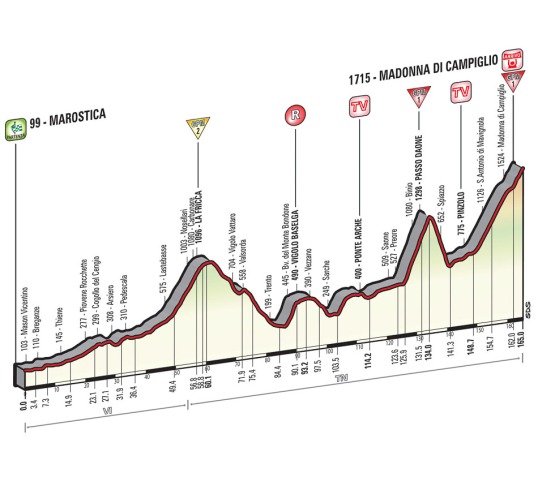2015 Giro d’Italia – Third week stats
– Alberto Contador took his second triumph in the race, for a total of seven Grand Tours
– The Spaniard became the second rider, after Franco Balmamion, to win the Giro d’Italia two times without a stage victory along the way
– Alberto Contador is the second rider to win all three Grand Tours at least twice following Bernard Hinault
– Mikel Landa was the first rider to take two stages at this edition
– Same Mikel Landa became the second cyclist – after Marco Pantani – to win on Madonna di Campiglio and Aprica
– Steven Kruijswijk is the first Dutchman to pass first on the top of Mortirolo
– Mikel Landa won this year’s Cima Coppi, Colle delle Finestre
– Fabio Aru became the first Italian cyclist to notch the victory on Sestriere
– Philippe Gilbert is the first Belgian rider since Roger De Vlaeminck (1979) to win two stages at one edition of the Giro d’Italia
– Giacomo Nizzolo finished first in the red jersey classification without winning a stage
– Another rider of Trek, Massimo Coledan, is the “maglia nera” of this edition, as he came last in the overall standings
– Iljo Keisse scored his maiden victory in a Grand Tour
– Thanks to the Belgian rider, Etixx-Quick Step has now got a stage in the last eight Grand Tours
– 11 riders have abandoned during the third week of the race
– For Alessandro Petacchi, this was the last Giro d’Italia of his career
– Eduard Grosu and Serghei Tvetcov became the first Romanian cyclists to complete a Grand Tour
– Seven neo-pros came at the start of the Giro d’Italia, five of them finished the race: Giacomo Berlato, Clement Chevrier, Luca Chirico, Eduard Grosu and Riccardo Stacchiotti
– Androni Giocattoli-Sidermec is the team with the most days spent in a breakaway, 14 out of the 19 stages in line
– Four Astana riders came in the top 10 on Sestriere, which hasn’t been done on a summit finish since Panasonic, in stage 1a of the 1987 edition
– Astana, FDJ, Giant-Alpecin and Tinkoff-Saxo are the four teams that finished the Giro d’Italia with all nine cyclists
– For Adam Hansen, this was the 11th Grand Tour in a row that he completed, one shy of Bernardo Ruiz’s record
– 11 teams were left winless in Milan: AG2R, Androni Giocattoli-Sidermec, CCC Sprandi Polkowice, FDJ, Giant-Alpecin, IAM, LottoNL-Jumbo, Nippo-Vini Fantini, Southeast, Tinkoff-Saxo and Trek Factory Racing
– This Giro d’Italia had the third fastest average speed of the last 35 years: 39,615 km/h






